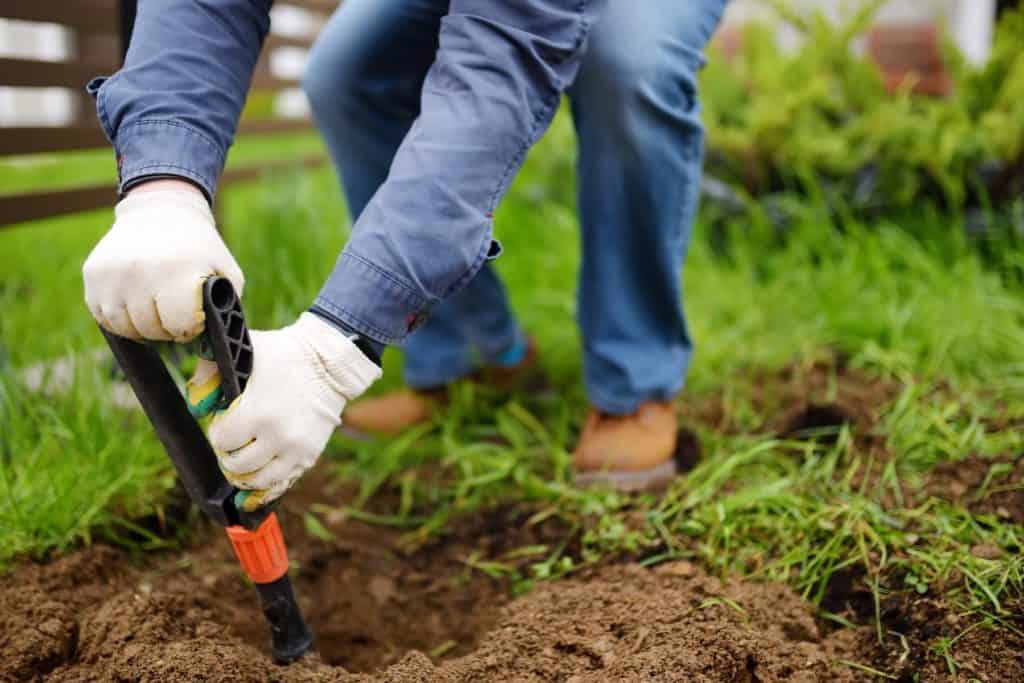After the cremation is complete the family will receive the cremated remains. They can store the remains at home or a columbarium, spread them in a meaningful spot during a scattering ceremony, use part or all of the cremains to make a memento or bury the cremated remains.
Over one third of families (35.2%) choose to bury the cremated remains. It gives families a sense of comfort that their loved one has a final resting place. Choosing this option can be more complex than storing or even scattering the remains. One of the biggest questions is how deep the cremated remains should be buried.
There isn’t one specific answer to the question. The type of urn that’s used and where you plan to bury the cremated remains make the biggest difference.
Burying Cremated Remains on Private Property
Many families choose to bury cremains on their own property where they know the burial site will be maintained. The top priority when you’re on private property is to bury the remains deep enough so that they won’t be disturbed by an animal. The standard rule of thumb is three feet deep whenever possible. If you aren’t able to dig that deep the remains should be buried at least 12” deep.
You can take a few precautions if you have a shallow plot:
- Mound dirt on top of the plot.
- Cover the plot with a plant or sod.
- Check on the plot daily to look for signs of a disturbance.
Soil erosion is another consideration. Ideally, you want the cremated remains to remain at the depth that they are buried. But this isn’t always realistic. If you plan to bury the remains in an area that has a lot of water runoff or is on an incline plan for soil erosion.
Burying Cremated Remains in a Green Cemetery
The green cemetery will have guidelines that must be followed when burying cremated remains. There will likely be a special area of the cemetery just for burying cremated remains. It’s best to discuss the burial directly with the cemetery to know how deep it should be.
An even bigger concern than depth is what is going in the ground. The cemetery will want to make sure you’re only using certain materials in a certain way.
Burying Cremated Remains in a Traditional Cemetery
Like green cemeteries, traditional cemeteries will have guidelines for how deep cremated remains need to be buried. Typically, it is possible to bury cremated remains on top of a casket that’s six foot under the ground. You may be able to bury the cremains to either side of the casket as well.
Burying an Urn for Planting
Burial urns that contain tree saplings or shrub seedlings are becoming more common as people look for greener funeral options. Unfortunately, the process isn’t as simple as putting any plant and the cremated remains in any urn.
The cremated remains must first be treated so that the pH level is suitable for growing plants. It’s also best to use a tree or plant that is native to the area. The burial depth will partly depend on the plant within the urn. Essentially it needs to be the same depth as if you were planting a regular seedling.
Burying a Biodegradable Urn
Biodegradable means that the material breaks down in the soil. How quickly the urn will break down depends on what it’s made of. Most biodegradable urns will break down in 1-20 years.
Biodegradable urns are ideal when you are burying cremated remains in a green cemetery, natural cemetery or state park. The recommendation for burial depth is the same as a regular urn with the minimum being one foot and the ideal depth being three feet.
If you have questions about burying cremated remains or the cremation process in general, the team at Green Cremation Texas can provide expert advice. Call, email or text us for answers to your questions any time of day.





